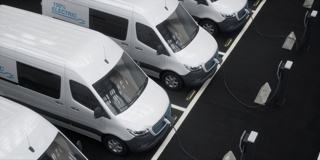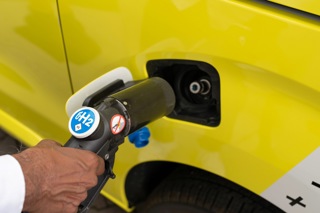By Alexander Krug, head of automotive practice for central Europe at Arthur D Little
Significant opportunities are arising from the trucking industry’s transition to electric drivetrains.
The majority of truck chargers will rely on direct current (DC) technology, representing a tremendous opportunity for DC charging manufacturers.
Passenger car electrification is already underway and battery electric vehicle (BEV) sales are breaking records, but movement in the truck segment toward electrification has been very limited so far.
But this is changing. BEV technology is comparatively mature and enjoys significant overlaps in R&D with the passenger vehicle industry, which may facilitate the near-term, large-scale rollout of zero-emission (ZE) battery electric trucks.
Truck charging use cases
We distinguish four different use cases for truck charging. The time available for a truck to charge is the main differentiator, which in turn determines the power capacity for chargers:
1. Depot charging. In most cases, this occurs overnight. This leaves plenty of time to generate a full charge, but the actual time spent at the depot can vary greatly.
2. Destination charging. Just as trucks can be charged at their home depot when not in use, they can also be charged when stationary; for example, while loading and/or unloading at their stops, be it a grocery store or logistics center.
3. Public fast charging. This category of charging happens at publicly available en route charging stations. As en route charging by definition increases cost, the time spent charging should be kept to a minimum.
4. Public overnight charging. Similar to public fast charging, overnight charging takes place at en route charging stations. The key difference is that the allowed charging time is significantly longer, as drivers are required to take longer breaks for food and rest.
Depot charging will be the dominant use case throughout this decade, as early generations of electric trucks are primarily utilised on shorter routes.
The characteristics of these trucking use cases allow for overnight charging at a home depot, where CAPEX can be minimised by using the lowest-powered chargers possible.
The market opportunity
As electric trucks become increasingly commonplace, the demand for an immense amount of energy will rise.
By 2030, electric trucks could require close to half of the energy needed by their passenger vehicle counterparts.
Governments, motorway operators, TSOs, DSOs, and utility companies are advised to act swiftly, given the lead times typically associated with this category of infrastructure development.
Truck electrification can only work if renewable energy generation and grid infrastructure capacity are expanded. Building infrastructure takes years, so planning now is crucial.
We expect the truck-charging use case to drive DC technology development, which will inevitably spill over to the passenger vehicle side, which in turn is a prerequisite for many energy-related value pools, such as grid balancing through V2X and bidirectional charging.
Hence, beyond gaining access to an attractive charging segment in itself, savvy companies can use this opportunity to access yet-to-mature, high-value revenue pools in the passenger vehicle market.
Depot charging is predicted to account for more than 80% of installed chargers by 2030, but it is less dominant from a revenue pool perspective.
In fact, our projections show that only around 41% of the total expected revenue pools for truck charging in 2030 will be associated with the depot charging use case, which is primarily due to less costly hardware with significantly lower power requirements.
Conclusion
Truck charging is among the fastest-growing business opportunities in the wider vehicle electrification space and represents a tremendous market opportunity, particularly for DC hardware manufacturers and CPOs.
The requirements for power output and reliability create a high-value opportunity for both one-time and recurring business models.
However, from today’s perspective, it is more a marathon game than a sprint. In particular, public-charging CPOs that want to be part of this game require deep pockets and staying power to come out as winners.
With current market participants hesitant to go all-in, the door is open for new market entrants.




















Login to comment
Comments
No comments have been made yet.